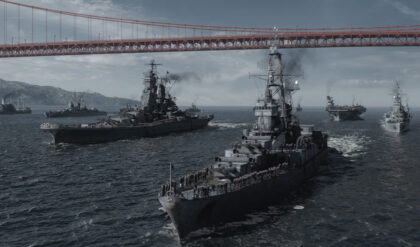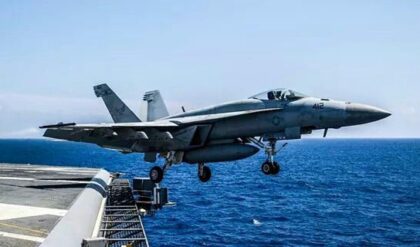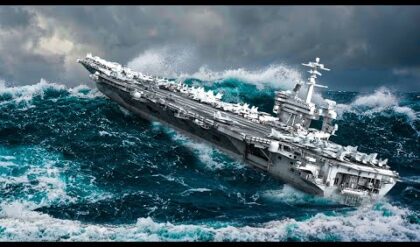The Flettner Fl 185 was one of the most unusual prototype designs to be proposed in the pre-war era. It was conceived by German inventor and aerospace engineer Anton Flettner between 1936 and 1937 with support from the Kriegsmarine (German navy) and combined the technology concepts of a conventional plane with a helicopter.
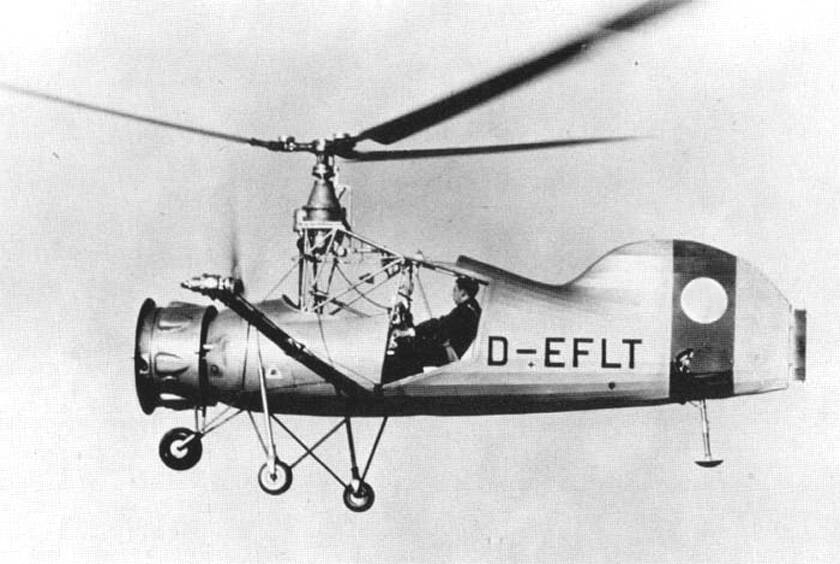
The Fl 185 followed the design philosophy of a groyne: an aircraft which could take off and land vertically using a helicopter-type rotor blade and then cruise using its conventional plane engine. It was based on an earlier prototype effort by Flettner, the Fl 184 which had shown promise but had been destroyed in an accident.
Flettner’s aircraft also demonstrated potential, but the testing period also indicated flaws in the design which could be improved by simply changing the aircraft into a more conventional helicopter design.
Origins
Before embarking on the aerospace design, Anton Flettner had worked as a maths and physics teacher in a small village near Frankfurt. During this time, he began experimenting with harnessing natural resources such as wind and air as a means to power machinery.
He left his teaching post following the outbreak of the First World War and established himself as a prominent designer in Germany while working for renowned airship builder Graf Zeppelin, but his interest still lay within experimental vehicles, particularly those that could be controlled remotely.
During the First World War, he took up employment with the German War Ministry. He worked on various experimental designs for air, water and land vehicles, including a remote-controlled torpedo that could be steered by radio from the launch ship into the enemy target.
 Flettner had previously worked on designing ships.
Flettner had previously worked on designing ships.
His most notable creation was perhaps the Servo tab which evolved into the modern trim tab still used in planes to this day to control the rate of flaps on the trailing edge of an aircraft.
At the end of the war, Flettner continued to make a name for himself by designing early wind turbines and pioneering the “rotor ship” concept in which a boat was powered by vertical rotors over a traditional propeller. The idea was to reduce the number of crew needed and burn less fuel.
However, his interest began to shift towards aviation and Flettner sought to transfer his experimental ideas into a new aircraft design.
His fascination with harnessing wind power led Flettner to explore early rotor blade concepts and helicopter technology, still in its embryonic stage in the aftermath of the First World War.
This did not deter Flettner and his interest in this new form of aerospace technology continued to grow.
In the early 1930s, he created the Flettner Fl 184 autogyro which combined elements of a conventional plane and a helicopter. Flettner hoped the design would be used for reconnaissance and anti-submarine warfare.
During initial tests, the idea showed promise by having the potential to be launched from an aircraft carrier or ship without necessitating a long landing platform or runway.
Various branches of the German military took an interest in the design with the belief that it would not take up much deck or storage space when being ferried across the sea.
 The Fl 184 which was the first attempt at this new type of aircraft.
The Fl 184 which was the first attempt at this new type of aircraft.
However, the aircraft was not put into mass production. Three airframes were built, only two were half completed and the one finished working prototype was destroyed in an accidental fire in December 1934.
Despite his first autogyro design not being a success due to unfortunate circumstances over design failure, Flettner persevered and began working on a new design to catch the attention of the German military which would evolve into the Flettner Fl 185.
Development
In February 1936, Flettner was offered a contract by the German Kriegsmarine to develop a new design based on the previous Fl 184 concept.
By this stage, the Nazi government had effectively torn up the Treaty of Versailles which had limited the production and industrial capacity of German aircraft manufacturers.
Removing all limitations allowed for more financial backing and design freedom for military projects and both were encouraged as the Nazi Party embarked on a mass rearmament program for the German military.
The Kriegsmarine had become interested in the idea of helicopter-type aircraft that could take off or land vertically and be used for observation or air-to-surface tactical strikes.
Provided funding for the project,the German Ministry of Aviation requested that two working prototypes be built for testing and proving runs.
The German Ministry of Aviation gave the project the name “Helicopter Conversion 184” as it was planned to incorporate the unfinished third prototype of the Fl 184 airframe during its construction and insurance money collected from the Fl 184’s crash was used in part to finance the Fl 185 prototype.
Flettner’s development of the aircraft had originally begun the year before in 1936 following the destruction of the Fl 184, but with the new support, he developed and enhanced the Fl 185’s design from an autogyro into a new gyrodyne principle.
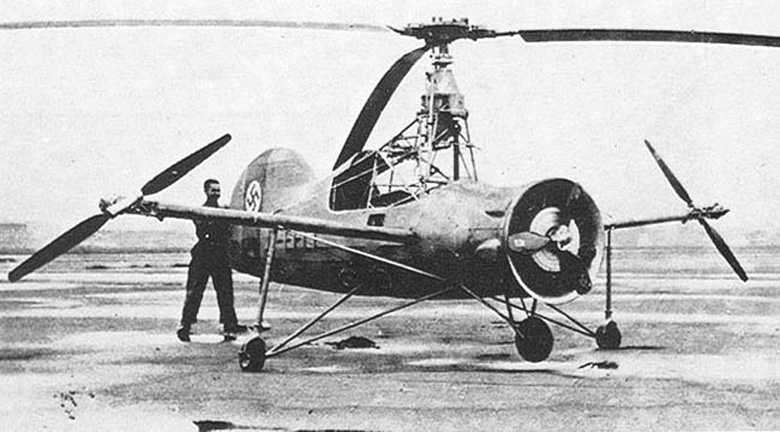 Taking learnings from the 184, the improved Fl 185 took flight.
Taking learnings from the 184, the improved Fl 185 took flight.
In essence, a gyrodyne would fly and function in much the same way as an autogyro using both helicopter and conventional aircraft principles but mainly uses the helicopter rotor blades for takeoff to give the aircraft vertical takeoff and landing (VTOL) capabilities, while a plane engine and propeller would fly the aircraft at cruising altitude like a conventional aircraft.
To achieve the gyrodyne principle, Flettner designed the Fl 185 with a three-blade rotor (with each blade measuring twelve meters) fitted to the top part of the fuselage.
The aircraft’s torque compensation would be achieved using variable-pitch pusher propellers fitted at the rear of the aircraft and driven by beams protruding from the fuselage to the left and right.
During takeoff or when the aircraft was hovering, the right propeller would push the Fl 185 backwards and the left propeller forwards, so that the momentum they created in the air would compensate for the turn from the main rotor.
Power would be provided by a BMW-Bramo Sh 14 A radial engine that could produce up to 160 horsepower. The engine was air cooled and fed by ducts built into the front of the fuselage.
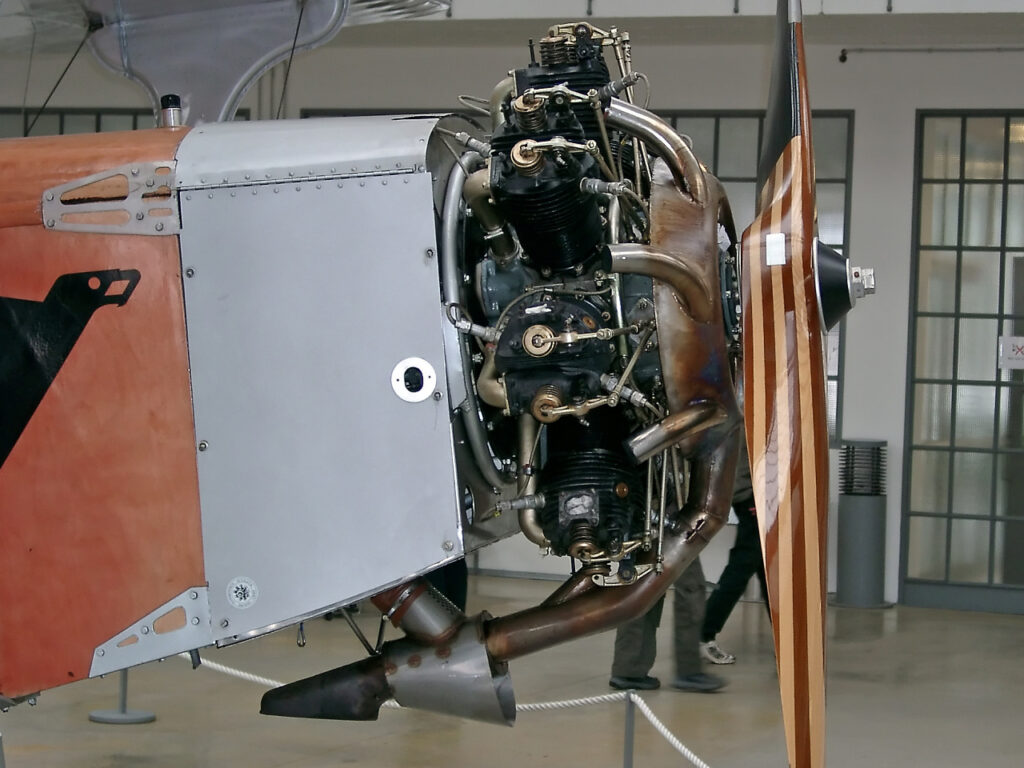 Although small, the Sh 14 was plenty powerful for Flettner’s application.
Although small, the Sh 14 was plenty powerful for Flettner’s application.
The aircraft was designed to carry one pilot who would sit in a cockpit that was open to the air with no canopy.
The Fl 185’s landing gear would consist of a wheel fitted beneath the nose, two smaller stabilising wheels under the outriggers and a skid on the rear of the fuselage to prevent tail strike.
Testing
A full-sized mockup of the Fl 185 was presented to the German Ministry of Aviation before tests began in 1937. Despite the Kriegsmarine requesting two models, only one working prototype was completed in the end.
The sole prototype was given the registration and serial number V1 D-ELFT before it was submitted to the Ministry of Aviation and military observers for proving tests.
The Fl 185 was flown in a series of low-altitude tests until 1938 and despite Flettner’s hopes, only one working model was ever produced. Although the initial results looked promising, the Ministry of Aviation chose not to go ahead with the project.
The testing yielded results that were both interesting to Flettner’s research but also consigned the Fl 185 to its fate: Flettner found during the tests that the propeller used in autogyro designs would not be necessary to achieve conventional flight after the takeoff.
The helicopter rotor blade itself could provide power for cruising flight as well as lift, essentially meaning that the best option was to create something resembling what would become a modern helicopter design over a more complex autogyro which would require more building materials and training to operate.
Aftermath
Based on his new findings, Flettner pressed ahead with a new design he called the Fl 265.
Unlike the Fl 185, the new Fl 265 placed more emphasis on the rotor blade over the plane engine and would eventually evolve into what was more of a true helicopter design that relied on a single rotor blade to lift the aircraft into the air.
 The Fl 265.
The Fl 265.
The Kriegsmarine were enthusiastic about the design and ordered six working units before Flettner had finished conceiving a mockup or a working prototype.
The new orders for the Fl 265 put any remaining work on the Fl 185 on hold indefinitely and Flettner decided not to revisit the project unless asked to do so.
Although one Fl 265 crashed during the testing stages, the others performed well and Flettner moved all of his focus onto the new design.
Unlike other German aerospace manufacturers or military figures, Flettner had something of a politically complicated relationship with the Nazi Party and was married to a Jewish wife.
One of his colleagues was also of Jewish descent and both focused on spotter aircraft designs over attack-type aircraft.
After liaising with Henrich Himmler, Flettner sent his wife and family to neutral Sweden throughout the war while he continued to work on helicopter projects for the German military.
After the defeat of the Nazis, Flettner was initially held in an Allied prison before he emigrated to the United States with his family as part of Operation Paperclip where he worked as a technical advisor to the United States Navy and later various private aerospace companies before his death in 1961.
Although Flettner’s Fl 185 design did not see any active service, his design ideas did inspire later and more successful helicopter models and much of his work has been retrospectively praised by other aerospace engineers.

